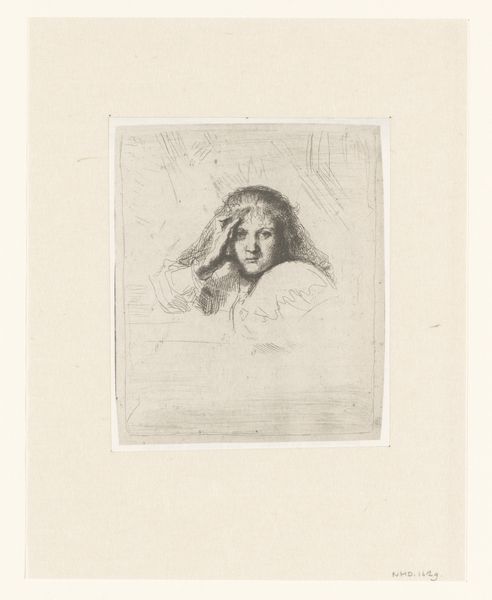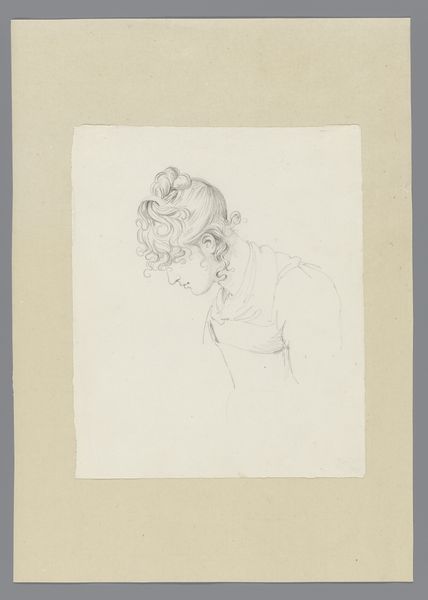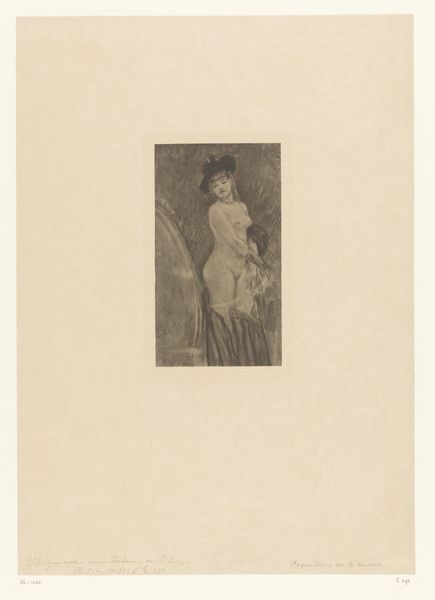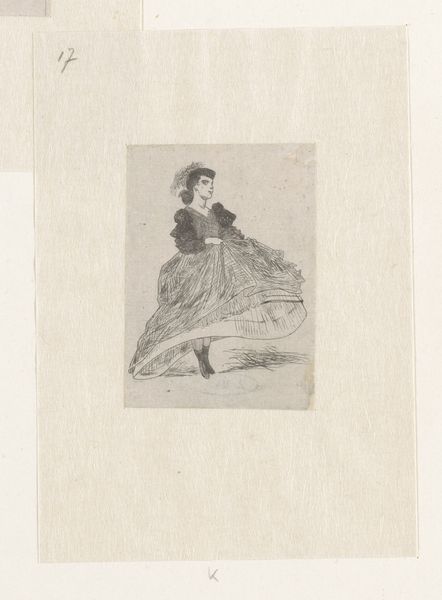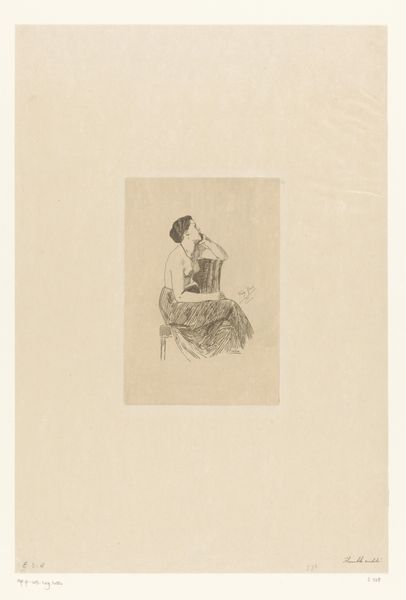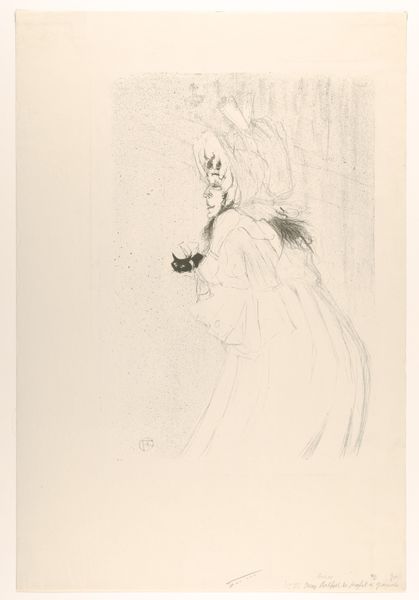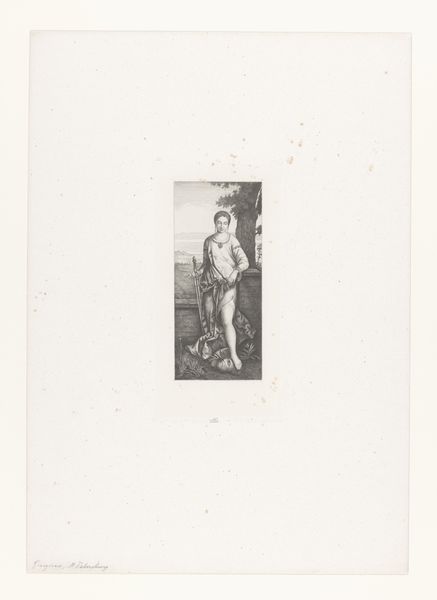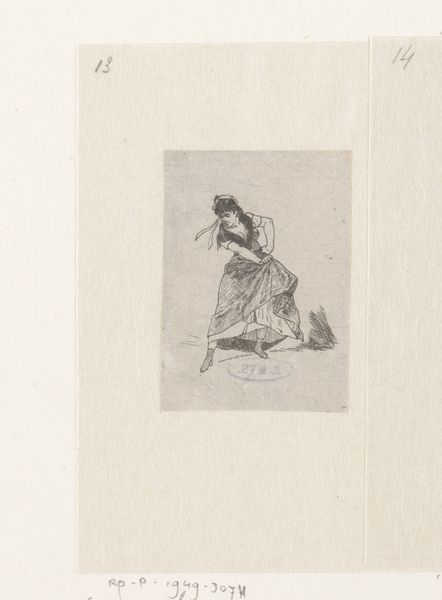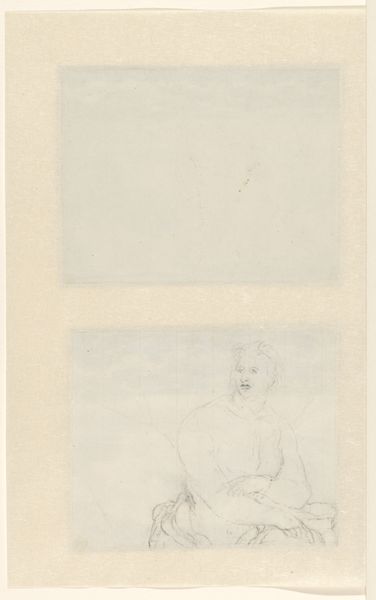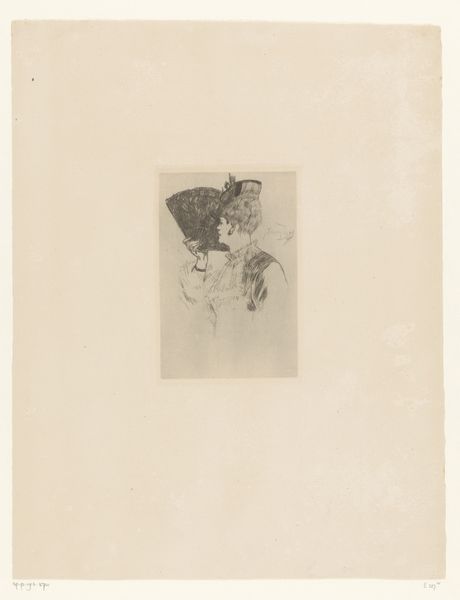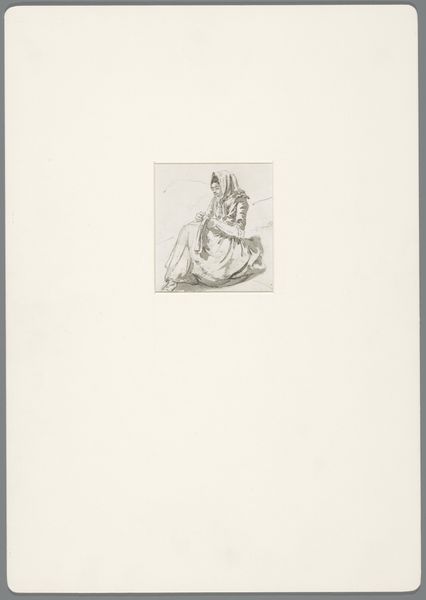
drawing, pencil
#
portrait
#
drawing
#
neoclacissism
#
pencil
#
genre-painting
#
academic-art
Dimensions: height 142 mm, width 162 mm
Copyright: Rijks Museum: Open Domain
Editor: This drawing, dating from somewhere between 1750 and 1809, is titled "Op de grond zittende boerin", which translates to "Peasant Woman Sitting on the Ground." It's a pencil drawing by David Alphonse de Sandoz-Rollin, and what strikes me is the subject’s calm demeanor. How does this depiction of a peasant woman reflect the social currents of the time? Curator: It's fascinating, isn’t it? Remember, during this period, Neoclassicism was in vogue, often idealizing subjects even when portraying everyday life. The seemingly simple scene isn't just a random sketch, it is Academic Art. Consider how genre paintings, like this one, served to reinforce or sometimes challenge existing social hierarchies. Editor: So, is the artist making a statement about class, even subtly? Curator: Precisely! The portrayal, even in its seeming simplicity, speaks volumes. Think about how the 'noble savage' trope played out in art of this time. Is this a romanticized view of rural life, or is there a sense of genuine empathy, portraying a real woman in a real situation? Editor: I see your point. The artist could be showing us a romanticized idea of peasant life. Curator: Indeed. And what role do institutions like the art academy and salons play in shaping such imagery and its reception by the public? These spaces legitimized certain representations. Editor: So, the artistic establishment helped frame the image of the peasant woman. I learned that seemingly simple drawings may contain a richer view of history than previously thought! Curator: And by considering the artwork's place within its historical context, we get a better understanding of the visual rhetoric of power and class at that time.
Comments
No comments
Be the first to comment and join the conversation on the ultimate creative platform.
